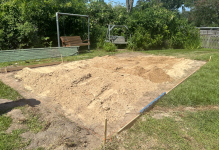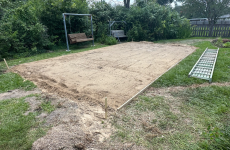Hey all, new to pool ownership and new to the forums. I decided this year to buy a 12x24 Intex AGP. Last weekend we cut the sod, rented a skid steer to dump all the sand in the area, and then leveled it all out. This is in southern Louisiana in the 96 degree heat, so it was a hard day and I took Sunday off to recovered. I'm all pumped to build the pool this weekend but..... now I'm starting to worry I made a mistake. I used river sand as my foundation, and its not compacting very well. I put my foot on the outside border today where the pool will not go, and with even the slightest amount of pressure, I could feel the sand giving way to my footprint. Not to mention there's countless little twigs and debris mixed in...
Did I make a huge mistake?? Is river sand usable at all or am I going to have to go back to the drawing board?
Did I make a huge mistake?? Is river sand usable at all or am I going to have to go back to the drawing board?
Last edited:






